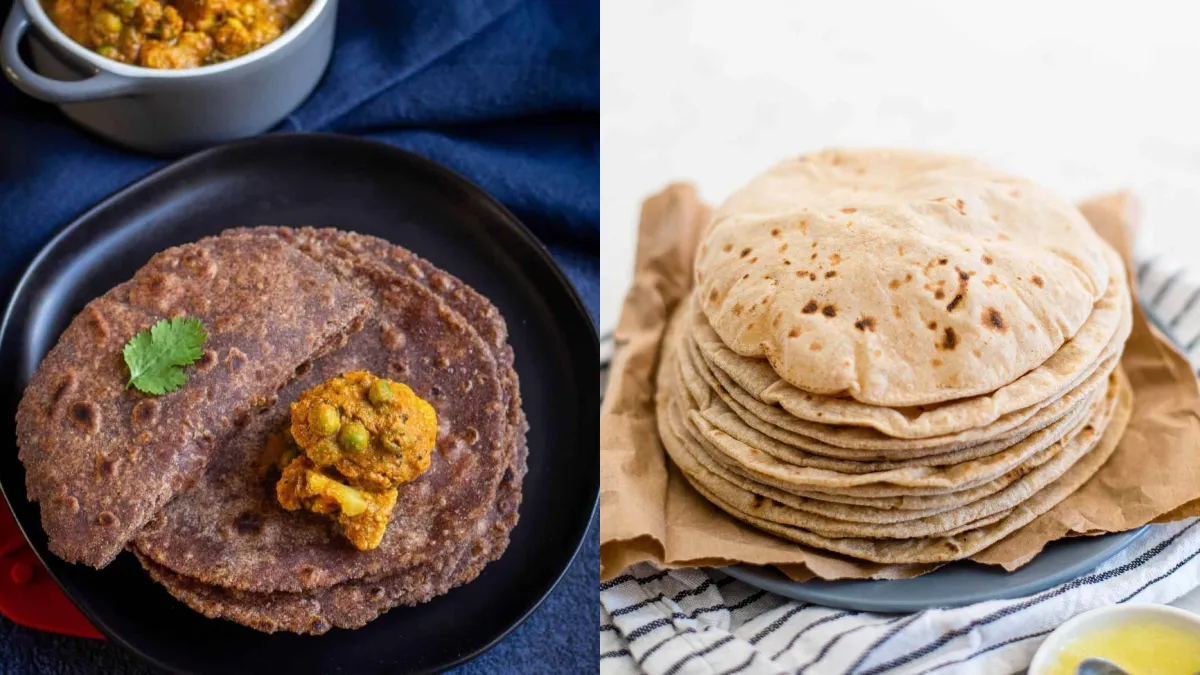In the quest for healthier dietary choices, the debate between millet and grain roti unfolds, each offering distinct nutritional merits. Millet, encompassing varieties like pearl millet and finger millet, brings gluten-free options rich in fibre and vital minerals. Meanwhile, grain roti, a medley of whole grains, presents a diverse nutrient profile. As we delve into the comparative analysis, we unravel the intricacies of these staples, exploring their impact on nutrition, gluten content, blood sugar and more.
Nutritional composition:
Millet roti, crafted from grains like pearl millet, foxtail millet, or finger millet, stands out for its rich nutritional profile. Packed with fibre, vitamins, and essential minerals such as magnesium, phosphorus, and iron, millet varieties contribute to a well-rounded diet. Conversely, grain roti, comprising a blend of whole grains like wheat, barley, and oats, offers a mix of nutrients including fibre, B vitamins, and antioxidants.
Gluten content:
The inherent gluten-free nature of millets makes millet roti an attractive choice for those with gluten sensitivity or celiac disease. On the other hand, grain roti, often made from wheat, does contain gluten. While generally benign for most individuals, those with gluten-related disorders may find millet roti a more suitable alternative.
Blood sugar impact:
Millet roti emerges as a favourable option for maintaining stable blood sugar levels due to its lower glycemic index compared to some refined grains. Meanwhile, grain roti, though a part of a balanced diet, may have a relatively higher impact on blood sugar, necessitating consideration for individuals managing blood glucose levels.
Weight management:
The high fibre content in millets, a key component of millet roti, contributes to a sense of fullness, potentially aiding in weight management. Similarly, grain roti, being a good source of fibre, supports satiety, making it a valuable inclusion for those focusing on weight control within their dietary choices.
Heart health:
Millet roti, with its abundance of nutrients like magnesium and potassium, contributes to heart health by aiding in blood pressure regulation. These minerals, combined with fibre content, may play a role in reducing the risk of cardiovascular issues. Similarly, grain roti, particularly when incorporating heart-healthy grains like oats and barley, can also positively impact cardiovascular health by promoting lower cholesterol levels and providing essential nutrients that support overall heart function.
ALSO READ: Black vs Brown rice: Which is the healthiest option?

